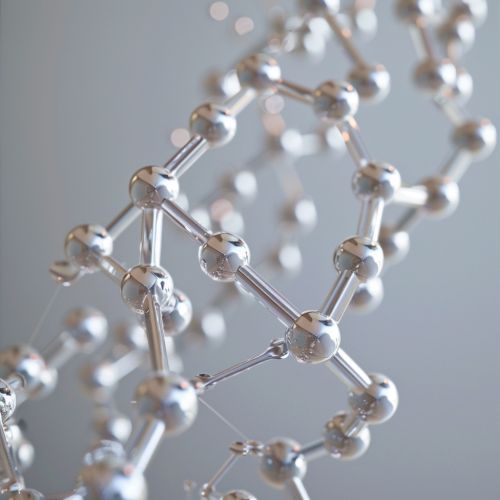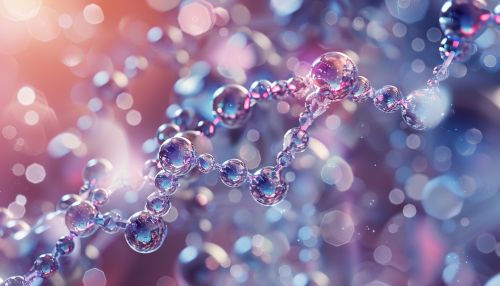Flavin Adenine Dinucleotide
Overview
Flavin adenine dinucleotide (FAD) is a redox-active coenzyme associated with various proteins, which is important for their enzymatic activities. It is one of the main components of the electron transport chain and plays a vital role in both cellular respiration and photosynthesis.


Structure and Properties
FAD is a complex organic molecule composed of two main parts: a riboflavin moiety and an adenine dinucleotide. The riboflavin part of the molecule is composed of a three-ring system having two fused rings, a pyrimidine ring and a thiazole ring, attached to a ribose sugar. The adenine dinucleotide part is composed of an adenine base attached to a ribose sugar, which is linked to another ribose sugar through a pyrophosphate linkage.
The molecule has several important properties that contribute to its role as a coenzyme. It is capable of undergoing redox reactions, and it can exist in three different oxidation states: the fully oxidized form (FAD), the semiquinone form (FADH), and the fully reduced form (FADH2). This redox potential is due to the presence of a conjugated system of double bonds in the isoalloxazine ring of the riboflavin moiety, which can accept two hydrogen atoms (a proton and two electrons).
Biological Role
FAD is a crucial coenzyme in biological systems, involved in several important enzymatic reactions. It is a universal coenzyme and is found in all living cells. It is involved in various metabolic pathways, including the Krebs cycle (or citric acid cycle), fatty acid oxidation, and the electron transport chain.
In the Krebs cycle, FAD is a coenzyme for the enzyme succinate dehydrogenase, which catalyzes the oxidation of succinate to fumarate. This reaction is coupled to the reduction of FAD to FADH2.
In fatty acid oxidation, FAD is a coenzyme for the enzyme acyl-CoA dehydrogenase, which catalyzes the first step of the β-oxidation pathway. This reaction involves the dehydrogenation of acyl-CoA to enoyl-CoA, coupled with the reduction of FAD to FADH2.
In the electron transport chain, FADH2 is oxidized back to FAD, with the transfer of electrons to the electron transport chain. This process contributes to the generation of ATP, the main energy currency of the cell.
Biosynthesis and Regulation
FAD is synthesized in the cell from riboflavin (vitamin B2), which is taken up from the diet. The biosynthesis involves the action of the enzyme riboflavin kinase, which phosphorylates riboflavin to form flavin mononucleotide (FMN), and then the enzyme FAD synthetase, which adenylates FMN to form FAD.
The cellular concentration of FAD is regulated by a balance between synthesis and degradation. The degradation of FAD is catalyzed by the enzyme FAD pyrophosphatase, which cleaves FAD to produce FMN and AMP.
Clinical Significance
Deficiencies in FAD can lead to various metabolic disorders. For example, a deficiency in the enzyme riboflavin kinase can lead to a deficiency in FAD, resulting in disorders such as Multiple acyl-CoA dehydrogenase deficiency (MADD). MADD is a metabolic disorder characterized by a wide range of symptoms, including muscle weakness, respiratory problems, and metabolic acidosis.
On the other hand, mutations in the genes encoding FAD-dependent enzymes can also lead to metabolic disorders. For example, mutations in the gene encoding the FAD-dependent enzyme acyl-CoA dehydrogenase can lead to disorders such as Medium-chain acyl-CoA dehydrogenase deficiency (MCADD). MCADD is a metabolic disorder characterized by an inability to break down medium-chain fatty acids, leading to symptoms such as hypoglycemia, lethargy, and even sudden death.
